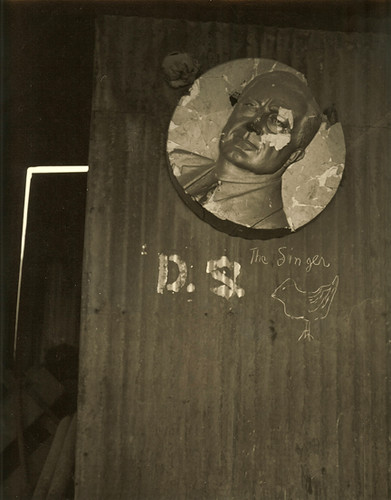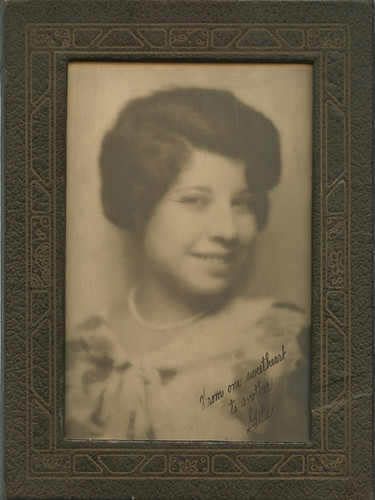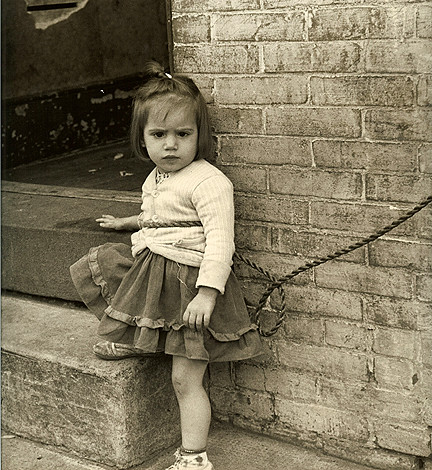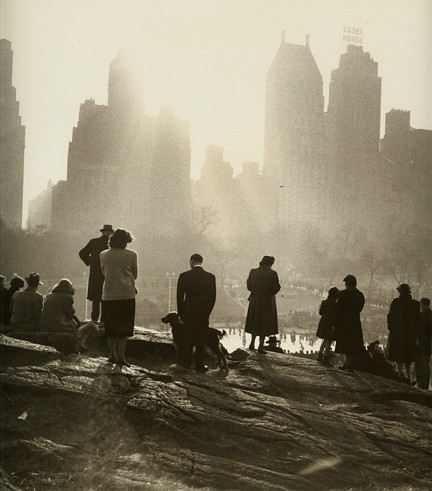
copyright Gita Lenz
Gita Lenz ~ An Introduction (draft)
I first met Gita Lenz during a show of my own work at a gallery in New York City in 2002. Gita was getting around the city in a wheelchair at this point, but along with our mutual friend, Timothy Bartling, she just seemed happy to be out on the town and to be looking at photography. She had told me then, a couple of times even, that she had been a photographer in her own right, though I didn’t know yet that I would eventually come to know her work as well as I have. Most conversations at galleries during receptions are light and airy and will usually drift away by the end of a wine-soaked evening. But speaking with Gita, I was struck by her energy and her direct appreciation, a woman in her nineties who had come out in brittle autumn weather to see an exhibition of photography in a small Greenwich Village gallery by a relatively unknown photographer. It was easy to guess that she was in her element.
Just prior to that time, Timothy had helped Gita move into a nursing home, one located near her old neighborhood. She had lived on the corner of Carmine Street and 7th Avenue for more than sixty years until, finally, the reality of living in a 5th floor walkup apartment by herself became too impractical. Married twice - her first husband, George Zoul, died in combat fighting Franco in the Spanish Civil War and she married her second husband, Richard Lenz, in 1940 and divorced eighteen months later – Gita had had no children by either marriage or any other close relatives who might have helped her with the move into a more appropriate setting when the time came. So, Timothy - being a friend of hers, a concerned neighbor and an essentially caring person - took it upon himself to help Gita with this transition into assisted living and, perhaps more impressively, helped her also with her personal affairs, as he continues to do today.
It was during this transition, from apartment to nursing home, that Timothy called and reminded me of Gita and asked for my advice as to what we might do with all of her artwork and photography equipment. A couple of weeks later, I drove up to New York with a friend and began the process of packing up all of the work. We ultimately decided I would take the work home with me to Virginia for storage, mainly because I had the space to absorb a large body of photographic work and also because we felt we had to keep it somewhere safe. It amazes me to think of what might have happened to this work if none of Gita’s neighbor’s had been kind enough to take an interest in her life. Because she was essentially alone in the later years of her life, I believe she would have been forgotten almost completely.
Along with numerous boxes of prints and many, many various boxes of negatives, there were also folders of correspondence with other artists and friends, photography books, prints given to her by other photographers, rolls of undeveloped film (still undeveloped at this point) tearsheets, published articles and several folders of poetry - essentially an abundance of evidence of a rich career and a compelling personality. Developing a passionate connection to image making, sometime after she began living on her own again, Gita pursued her photography goals despite a continuing lack of income or the support that might have allowed her to continue working much further into her later years. Significantly, though, in the time she was working seriously in photography, she experienced some notable recognition and enjoyed the company and influence of some of the major personalities in photography at that time. Her first major show was at the Brooklyn Museum of Art in 1952. Soon after, Edward Steichen included her work in the landmark exhibition, The Family of Man, at the Museum of Modern Art in 1955. Aaron Siskind was a friend and probable influence as well during the forties and fifties as they had a sustained correspondence in addition to sharing a fairly distinct stylistic connection in their photography.
The evidence seems to indicate that Gita dedicatedly pursued photography into the early 1960’s until her financial situation finally required her to seek a steadier income working as a copywriter and taking various secretarial or bookkeeping positions. It is possible that she continued photography in some manner through later years but there is no dated work beyond the early sixties. She did, however, continue with other independent pursuits, namely creative writing and poetry, and later studied with William Packard, founder of the New York Quarterly.
Getting to know Gita herself has been the greatest pleasure throughout this experience, but the larger body of photographic work was and remains an equally exciting discovery. Since most of the prints came with very little notation, it has been a challenge to organize them in a way consistent with how Gita might like to see her work presented, and we have tried to ascertain from her which among the images she most valued, which ones belonged together, etc.. There are clues as to which prints were final and which may have been just proofs, but it should be noted that the quality of the craftsmanship is very high. These are beautiful prints to see firsthand. She was an excellent printer and the work still holds up extremely well.
Gita’s archive includes various photo essays of coal miners, taxi drivers, botanical gardens, images of children, friends, more formal portraits, the occasional self-portrait, some experimental process work, a great wealth of street photography from various New York City neighborhoods which is some of the strongest imagery and a large body of observational work that has more to do with abstract expressionism than it does with the popular genre of street photography. Her connection to Siskind appears to be an important one in that a lot of her imagery has characteristics similar to Siskind’s work, imagery that was revolutionary in its impact upon modern photography. The symbolic and abstract nature of these images was almost painterly in some instances, and had more to do with the act of seeing than with the specific subject matter. These qualities seem to be directly correlated to the mid- twentieth century movements in the New York art world, and it is this characteristic, among others, that sets Gita’s work apart from the vast majority of enthusiastic mainstream photographers of this era, who were generally setting out to document the world around them.
As we sat in Gita’s recently vacated apartment, it hit home that this project was about something larger than photography or the disposition of what might be called an estate. Without the somewhat accidental friendship that started up between a very elderly woman and Timothy, a working chef more than fifty years younger than Gita, all of this work and personal history would have been on a direct course from landlord to landfill. Maybe certain things, possibly even the photography, would have matriculated into a thrift store bin for a very different style of consumption…
No one can say for certain what might have happened. But what ultimately became clear to us, as we drank a bottle of wine and considered the material remains of a life, was that there, in those two rooms of a small New York apartment, existed almost all that was left of someone who had, and still has, a very compelling story to tell. We didn’t know very much about Gita’s earlier life but it was easy to see the intensity with which she lived. Without Gita in sound enough mind to help us with her biography, we were somewhat at a disadvantage in learning this story from the fragments available to us. And though it might seem that drawing assumptions on such scant information could lead to a speculative history at best, we definitely felt called to do something. We felt that if we could place this work in photographic collections, and perhaps publish a book like the one you are holding, then Gita’s name would still be remembered and the work she did would be available for research and appreciation and, ultimately, for posterity.
As we have worked to pull the threads of a chronology of Gita Lenz’ photographic life and to make some sense of her place in the history of photography, the fragments tell of an extremely bright and progressive person, someone who generally struggled and ultimately failed to make a lucrative career out of her passion - but more importantly, the tale also tells of someone who managed, all the same, to craft a large and impressive body of artistic work. Among her belongings, there remain many clues as to Gita’s personality and character. We found books about socialism and communism, which may have actually belonged to her first husband, given his involvement with the fight against Franco and the Spanish Nationalist Party. We found letters indicating an involvement with the civil rights movement, letters seeking small loans in hopes of buying photo supplies, poems about love and heartache and loss, self portraits, portraits of cultural peers - dancers and artists mostly unknown to us – and connections to significant personalities in the New York art world. There is so much that we will never know and I deeply regret not trying to learn more about her even just a few years earlier, when her own history might have still been available for her to share. As it stands, this is really just the tip of an almost forgotten story about someone with warmth and depth and a creative spirit and it is a small wonder that we have even this much.
Recognizing the obstacles of time and memory that we all will face eventually, one of the most rewarding things I have been able to do with this work is to sit with Gita when I can and simply look through these photographs with her. Though, her short term memory falters much of the time and her long term memory is fractured as well, when Gita looks at her work, the depth of appreciation she has for these images is clear - and her pride evident. She is intellectually active still, and can be found reading the newspaper nearly every time that I visit her. And she remains a lovely, outspoken, occasionally crass, but decidedly vibrant spirit. It saddens me to think of her bound to a wheelchair and staring down the same hallway every day. The reality seems all too real, I suppose, and this cannot be an uncommon emotion to anyone visiting an older friend or loved one. I live too far away to visit very often but I am grateful to have had the opportunity to pull this work together, in hopes that her passion and talent can be appreciated and enjoyed by a much wider audience.
Thank you, Gita.
G.S.





